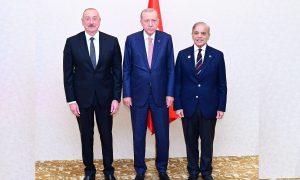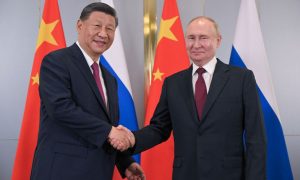IMF has asked to assure them from top, that the reforms will keep continue and they will give staff level agreement. In the very last day of two week talks, Finance Minister Ishaq Dar arranged a video meet up with the Prime Minister Shehbaz Sharif with IMF mission chief Nathan Porter. Where Prime Minister reiterated the assurances.
When the assurance arrived, IMF shifted the goal post and changed its stance, rather than offering staff level agreement paving the way for the approval of the $ 1.1 billion tranche. It kept the condition for meeting the fiscal deficit and imposing taxes, first and then imposing extra taxes of around Rs 120 billion than earlier agreed.
Does IMF Really Change Goal-Posts?
Dar knowing that IMF normally does that, could not finally control it too.
This bluff by IMF is a routine for the borrower countries, it was announced by Dr Ishrat Hussain, the former Vice President of World Bank, who broke this news, at a time, when all the condition were fulfilled, IMF added a few, which were again fulfilled, IMF added few again. Then Dr Ishrat who had joined as Governor State Bank of Pakistan, gave a statement that IMF is changing the goal post, which led IMF come to terms and approve and issue the tranche for Pakistan. It was year 2000-01, when this statement came.
Ishaq Dar, himself, when he was in opposition, used to say out loud in his statement, that he had a letter from IMF, threatening Pakistan to cripple it, if its terms and conditions are not accepted. With that some political and other non-financial points were also part of that threat letter.
Far Eastern countries especially Malaysia shout loud against IMF & World bank or Bretton Woods Institutions, that they are meant to destroy the enemy countries economies. Its 1997 currency crisis, actually created by them, as late Prime Minister Mahathir Muhammad of Malaysia used to claim.
Detailed IMF Conditions
Let us look further, the condition of IMF in the current program, privatization of state-owned enterprises (SOEs) especially the loss-making units like Pak Steel, X-Wapda Discos and profit making Gencos were also enlisted to divest for friendly countries. This move was already in place and work was underway for that. FATF condition for asset declaration of government employees from Grade 17-22 were implemented while the mission was suiting in Islamabad from January 31 to till February 09, 2023.
Primary balance should be zero, tightening the belt of government spending, is always a key IMF condition. Primary balance, is defined as the difference between government’s revenue (earning) and its non-interest expenditure (spending, not including debt payments). It can be taken as the as a percentage of GDP or Gross Domestic Product.
The benefit used to come from provinces as they normally produce surplus and combined deficits make as a better number than simply very higher federal deficit. Friendly government in Punjab always help federal government in this scenario, whenever there is an opposite party at Punjab, the deficit had gone out of proportions. This time it is luck of the center that Punjab government was just changed within days and the deficit seems to stay in control.
Energy Losses
Losses in energy sector and the circular debt has become considerably higher, it should be reduced and taken to zero or eliminated in the government books of accounts. Rs 3100 billion electricity produced and Rs 1800 is bill payments are coming around Rs 1300 billion are the losses, not covered from any where and are also wasted in subsidies. Cutting subsidies will also slash these losses ultimately helping to control fiscal deficit.
Currency and GDP Size
The currency depreciation had a very negative impact, both on rupee value and the debt burden. Pakistan size of GDP had crossed few times over $ 300 billion, but as the rupee value comes down, the size again falls below $ 300 billion. It had crossed more than once $ 300 billion and if the economy could have been sailing smoothly, it should have been near $ 400 billion, if it had nominal growth rate of 10-15% in last few years.
Real GDP growth rate was lower but when combined with inflation it becomes nominal growth rate which when the inflation rate is just over 25%, then 2% of real GDP growth rate makes it to 27% simply. So, only 15% for three years could have added $ 100 billion in simple two to three years.























